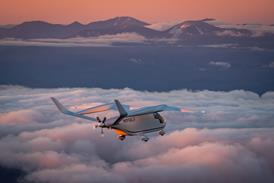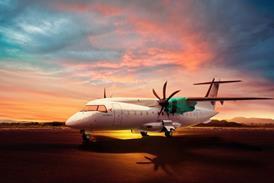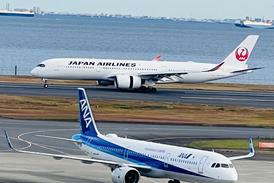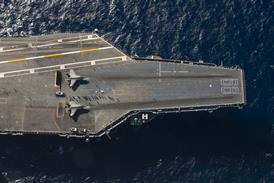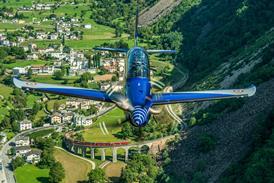Graham Warwick/ATLANTA
INTERNATIONAL BUSINESS has provided a lifeline to military-simulator manufacturers over the past 12 months as individual domestic opportunities have failed to materialise as expected. Delays in programme starts and contract awards have continued to plague the industry, making planning and forecasting difficult.
Industry consolidation continued over the past year, notably with Hughes Training's acquisition of Link from CAE, creating the dominant supplier of simulators for US combat aircraft. Hughes acquired Link's contract to supply F-16 full-mission simulators and unit-level trainers to Taiwan to add to its own business building F-16 unit-training devices for the US Air Force.
The consolidated Thomson Training and Simulation (TTS) continues to make inroads into the US combat-aircraft simulator market, winning a Lockheed Martin contract to supply training devices for the F-16 Mid-Life Update programme. The deal includes full-mission simulators and unit-level trainers for Belgium, Norway and the Netherlands. TTS is expected to announce another F-16 contract soon.
One of the biggest contracts of the past year was Reflectone's $77 million deal to supply the complete training system to accompany the Royal Air Force's purchase of 25 Lockheed Martin C-130Js. The sale of a C-130H simulator to an unidentified customer followed, and Reflectone is bidding for C-130 simulator contracts in Australia and the USA.
CAE Electronics' link with Russian simulator design-bureau ERA paid off when the Canadian company received a C$48 million ($35 million) contract to supply two MiG-29 simulators to Malaysia, including a full-mission simulator using CAE's MaxVue visual system coupled to a helmet-mounted display. CAE also received a contract to update seven German Panavia Tornado simulators.
Of the business opportunities in prospect for the year ahead, perhaps the biggest, is the ground-based training system for the US Air Force/Navy Joint Primary Aircrew Training System (JPATS). This will include a large number of training devices. A precursor to the JPATS is the USAF Northrop T-38 avionics-upgrade programme, scheduled for award early in 1996, which incudes new simulators.
The RAF plans to award a major support-helicopter training system contract during 1996. This is expected to include two simulators each for the Aerospatiale Puma and EH Industries EH101 and three for the Boeing Chinook. The British Army has selected the McDonnell Douglas AH-64D as its attack helicopter, with a training system to be provided by the US company using UK subcontractors.
Simulators will also be acquired as part of the RAF's Replacement Maritime Patrol Aircraft (RMPA) programme, scheduled for award in 1996. TTS has teamed with RMPA bidder British Aerospace and Reflectone with Loral. GEC-Marconi is leading the third bid, with Lockheed Martin, and is expected to integrate the training system if it wins the competition.
Manufacturers expect the much-delayed procurement of training systems for the new generation of European combat aircraft to get under way in 1996, leading to the selection of suppliers of training devices for the four-nation Eurofighter EF2000, French Dassault Rafale and Franco-German Eurocopter Tiger. The UK is reportedly opposed to a consortium approach to producing a training system for the EF2000.
Competitions under way internationally of interest to the simulation industry include Australia's search for a fighter lead-in trainer, expected to be decided in 1996. Fighter-selection programmes under way in Thailand and the United Arab Emirates are also expected to be decided in the next 12 months and pit US and European aircraft manufacturers against each other in contests with important consequences for the respective simulation industries.
Source: Flight International

